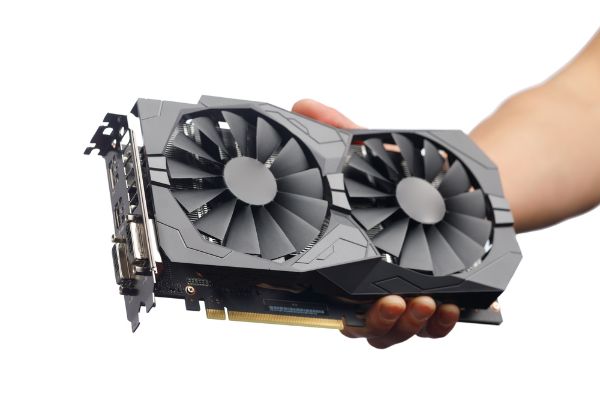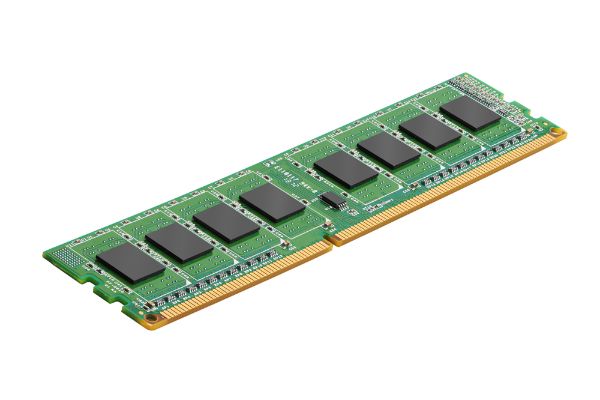Disclaimer: This post may contain affiliate links, meaning we get a small commission if you make a purchase through our links, at no cost to you. For more information, please visit our Disclaimer Page.
Random-access memory, often abbreviated as just RAM, is an important part of your computer’s hardware. Suppose you are at all familiar with computers. Here, you might have read that some programs or games require specific amounts of RAM to function on minimal settings, with recommendations for even more RAM should you wish to run things on the highest settings possible.
However, there’s another version of RAM called VRAM, and it is the video random-access memory that your device has available.
You may know that the CPU and GPU are crucial components of PCs and laptops. You can think of RAM as the system memory for the CPU, while VRAM is the memory that the GPU needs to operate. Some users wonder what might happen if they run short on VRAM.
We’ll discuss the possibilities here, how you might avoid this issue, whether increasing VRAM leads to anything noticeable in performance, and how necessary VRAM might be to enjoying some games.
Table of Contents
What Happens When You Run Out of VRAM?
One of the major differences between standard RAM and VRAM is how the computer accesses each type of memory. Video RAM typically takes longer to access, but it is also a major component in 3D graphics processing and other things related to the display.
We mentioned that the RAM is like the memory of the main central processor, but your graphics processor will also have built-in memory.
When you run resource-intense programs or games, the GPU can transfer some of its data to the computer’s main memory for processing. The more VRAM you have, the more graphics data the card can store before moving some of it to the main RAM for additional processing.
If the graphics card can move some data to the regular RAM, is it necessary to keep some VRAM around?
Yes, it is. Complex games can start stuttering and lagging if you run out of VRAM completely. You can think of VRAM as the kind of memory specific to graphics-based programs like games.
The VRAM stores environment maps, textures, or models that your games might use. The more complex games you play, the more VRAM you need to play them as they are meant to be.
You’ll notice some stuttering and a big dip in the frames displayed each second, or FPS if you run out of VRAM.
How Do I Fix Running Out of VRAM?
Running out of VRAM can cause some issues we touched on above. More severe cases may cause a game to crash to the desktop. However, it is also true that this can happen even when video memory itself is not the culprit.
For now, we’ll focus on ways that you might fix or alleviate running out of VRAM too early. Before we get into how this could be the fault of the VRAM, we should address a less common but still possible issue: the game itself.
Some games, particularly early releases or those still in beta, may not be optimized to use memory or other parts of your computer’s setup in the best ways possible.
This might cause such games to “leak” using too much memory, including video memory. You may notice that some of these titles also create very large virtual memory page files.
While some of this could still be the fault of your rig, there is a chance that the game is to blame. If a game is not yet optimized to run on recommended specifications, it may cause issues like running out of video memory that have nothing to do with your system.
To check for this, you can look at what the developers recommend for settings with their games. This could be a game issue if you have more than enough to meet those requirements.
You may need to wait until a more stable release of the title comes out.
You can try to do a clean install of the latest drivers for your card. You can use a device uninstaller program to ensure that all remnants of the old files related to this are scrubbed.
That way, the stuff you install later should not conflict with any of the old files. This isn’t a guaranteed fix, but if you haven’t altered the page file manually, this is a good first step to try.
Second, your operating system itself might need an update that optimizes it. For example, if you were running Windows, you can go to ‘Windows Update’ and see if there are any new downloads for something like the .NET Framework or anything else.
A major update to the OS could fix the issue.
Lastly, you can also try to move the GPU to a different PCI port or remove and reseat the battery for your motherboard. Running out of VRAM could be a temporary glitch fixed by doing one or both of these things.
If you have more than the minimum amount of VRAM recommended to play a particular game and still seem to run out early, the problem is likely to be something related to the things above, and it will be often more than just a matter of increasing VRAM.
Can I Use RAM as VRAM?
Some users will have much more RAM than VRAM, and it might be more RAM than they ever think they’ll need. If this is the case for you, you may want to dedicate some of your RAM as a stand-in for the lower value of your VRAM.
Whether you can do this might depend on the kind of graphics architecture that you have in your system. This is because your GPU needs to be robust enough to handle the rendering some games have in mind.
Additionally, you don’t really convert RAM to VRAM. What can happen is that a sufficiently advanced GPU may be able to swap between its own memory and the system memory as needed.
This is something that the drivers of your GPU would handle by themselves. Not all cards can do this, and it isn’t using RAM as VRAM.
Rather, it is giving the GPU another outlet by which it can have more resources to help with rendering.
Can You Have More VRAM Than RAM?
Yes, it is entirely possible to have more VRAM than you do RAM. But, how does that affect the system, if at all? It can, depending on how little system RAM you are dealing with.
While dedicated VRAM is great for games, you will probably notice in the specs for any title that it also has minimum requirements for RAM.
Games, and the cards you use to help you process graphics, need a minimum amount of RAM in order to run smoothly on either the minimum or recommended settings.
Both are different, but they are each important in their own way. Although you can buy sticks of RAM for your rig to increase the amount it has at its disposal, that is not the case with VRAM.
VRAM comes with the card you buy, and it is one of the main reasons users might want to upgrade their graphics cards.
Do You Need Dedicated Video RAM To Play Games?
You don’t necessarily need dedicated VRAM to play games. However, this heavily depends on which games you might play, and it also relies on how your rig is set up.
For example, integrated graphics cards can use system RAM to help them run games. However, VRAM is useful for loading textures at high resolutions. The visual quality of some games may suffer without dedicated video RAM.
Conversely, if you’re running a low-end game, you may be able to play it with VRAM below the recommended minimum without noticing anything problematic. Something like this could depend on what other settings you can tweak in the game.
Also, using just system RAM when a game needs at least some VRAM can result in taxing your GPU and causing balance or rendering issues.
Does Increasing VRAM Increase FPS?
As we mentioned earlier, insufficient VRAM can cause stuttering and a loss of frames in many games. Increasing it can have some positive impacts on the FPS.
However, other aspects of your system can also help the FPS.
It is good to remember that just increasing the VRAM may not give you a huge jump in how high the FPS can go.
Cards that are optimized for gaming may be better solutions overall. Getting a card with just increased VRAM might mean you get a power-hungry GPU that runs hot and only boosts the FPS by a few more frames.
Also, this topic relates to overclocking; if you’re interested, you can read more here.
Conclusion
VRAM may not be strictly necessary for all games, but it greatly benefits most users. It can render complex textures and models quickly, and having enough of it can help keep stuttering and other performance issues at bay.
Some cards will use integrated graphics to use the system RAM as well, but having some VRAM will help many players prepare for new games.


